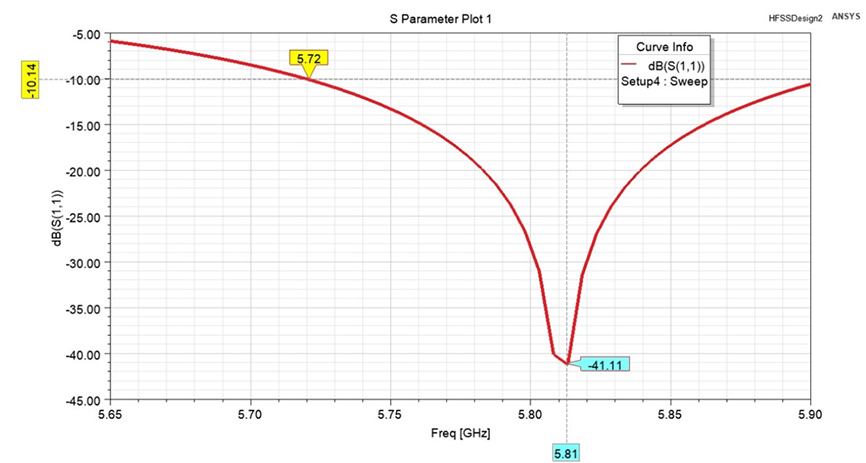
Analysis of Synthesizing Options for a Low-Element Antenna Array for Use as UAV Onboard Antenna System
https://doi.org/10.31854/1813-324X-2025-11-4-78-86
EDN: NYNYEJ
Abstract
Unmanned Aerial Vehicles (UAVs) are currently undergoing active development. Their radio equipment is also advancing, presenting new challenges for designers. From the antenna perspective, a straightforward solution for ensuring communication is the use of omnidirectional antenna systems, which allow establishing a communication link with the UAV from any direction. However, such systems have a limited communication range. A relevant task is to increase the operational range of communication links for unmanned aerial vehicles while maintaining the capability to establish a link from any direction. Primarily, increasing the range can be achieved by employing directional antenna systems; however, this is limited by the specific operational features of UAVs. Although numerous studies focus on creating antenna arrays with a wide scanning angle range, such systems require complex beamforming networks, which complicates their implementation on commercial products due to the additional weight burden on the UAV.
Aim. Development a switchable antenna system for unmanned aerial vehicles with the capability to select the radiation / reception direction in any azimuth plane direction to enhance the communication range compared to omnidirectional onboard antenna systems.
Materials and methods. As part of this research, models of a radiating element, a switchable circular antenna array, and a cylindrical antenna array were developed using the Ansys HFSS electromagnetic simulation package, which is based on the finite element method for calculating electromagnetic fields.
Results. The radiation patterns of an 8-element and a 6-element circular antenna array are presented, specifically the values of the directivity coefficient and azimuthal plane radiation patterns. Similar characteristics and parameters for a 6×2 element cylindrical antenna array are also provided.
Scientific novelty. The developed models increase the communication link budget of the UAV by 4.4‒7.2 dB compared to omnidirectional systems, which proportionally extends the range of the communication link. Particular emphasis is placed on the shape of the radiation pattern envelope when switching to an adjacent element of the antenna system, as well as on the feasibility of implementing not only circular but also cylindrical array geometries.
Practical significance. This research proposes design solutions for use on UAVs, enabling operation from any direction in the azimuth plane, as well as with an inclination in the elevation plane for the cylindrical antenna system.
About the Authors
P. A. MezhevovRussian Federation
K. O. Korovin
Russian Federation
References
1. Fedoseeva N.A., Zagvozdkin M.V. Promising application areas of unmanned aerial vehicles. Nauchnyi Zhurnal. 2017;9(22):26–29. (in Russ.) EDN:ZSUMLX
2. Habarina D.S., Tishaninov I.A. Analysis of the use of various types of unmanned aerial vehicles (UAVs) in agriculture. Nauka bez granic. 2021;4(56):78‒83. (in Russ.) EDN:JYHKLW
3. Antonov A.S., Antonov Y.G., Ballandovich S.V., Sugak M.I. Low-profile antenna intended for the installation on UAV. Proceedings of Saint Petersburg Electrotechnical University. 2013;6:3‒7. (in Russ.) EDN:QCKUUL
4. Andryushchenko M.S., Golik A.M., Sahnov S.A., Tereshin S.N. Antenna systems for unmanned aerial vehicles. Izvestiya Tula State University. 2024;5:230‒236. (in Russ.) DOI:10.24412/2071-6168-2024-5-230-231. EDN:GJODDY
5. Marques P., Martins M., Baptista A., Torres J.P.N. Communication Antenas for UAVs. Journal of Engineering Science & Technology Review. 2018;11(1):90‒102. DOI:10.25103/jestr.111.11
6. Antonov Yu.G., Ballandovich S.V., Kostikov G.A., Lubina L.M., Sugak M.I., Terenteva P.V. Unmanned aerial vehicle antenna range. Proceedings of the 26th International Crimean Conference on Microwave Engineering and Telecommunication Technologies, 4–10 September 2016, Sevastopol, Russian Federation. Sevastopol: Sevastopol State University Publ.; 2016. p.1086‒1092. (in Russ.) EDN:YOOYIZ
7. Mezhevov P.A., Korovin K.O., Likontsev A.N. Creation of a Vivaldi-Based Circular Antenna Array for Broadband Relay Channels. Journal of the Russian Universities. Radioelectronics. 2023;26(3):58–66. (in Russ.) DOI:10.32603/1993-8985-2023-26-3-58-66. EDN:VCWALX
8. Panchenko B.A., Nefedov E.I. Microstrip antennas. Moscow: Radio i Svyaz' Publ.; 1986. (in Russ.)
9. Bondarev A., Kirichek R. Overview of Unmanned Aerial Apparatus for General use and Regulation of Air UAV Movement in Different Countries. Telecom IT. 2016;4(4):13–23. (in Russ.) EDN:YLNEPH
Review
For citations:
Mezhevov P.A., Korovin K.O. Analysis of Synthesizing Options for a Low-Element Antenna Array for Use as UAV Onboard Antenna System. Proceedings of Telecommunication Universities. 2025;11(4):78-86. (In Russ.) https://doi.org/10.31854/1813-324X-2025-11-4-78-86. EDN: NYNYEJ


































